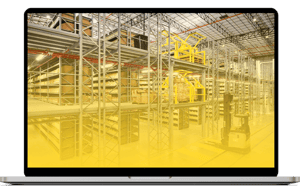ASRS
This powerful tool allows you to seamlessly integrate AS/RS cranes into your warehouse layout, optimizing vertical space and streamlining material handling processes. Visualize the movement of goods and ensure seamless integration with other warehouse components, such as conveyors and racking systems.
Design and visualize automated storage and retrieval systems
This powerful tool allows you to seamlessly integrate AS/RS cranes into your warehouse layout, optimizing vertical space and streamlining material handling processes. Visualize the movement of goods and ensure seamless integration with other warehouse components, such as conveyors and racking systems.
Essential AS/RS is ideal for:
- High-volume warehouses
- Distribution centers with limited floor space
- Facilities seeking to improve order fulfillment speed and accuracy
Shelving
CET ESSENTIALS MATERIAL HANDLING
Design and visualize various shelving types to accommodate a wide range of inventory, from small parts to bulky items.


"Due to the software’s efficiency, a single design project that used to take up to two days to complete can now be done in half a day’s time."
– Yoran Van Eekert, E’log Automation
-
Warehouses with diverse inventory
-
Distribution centers and manufacturing facilities
-
Retail stockrooms
- TYPES OF SHELVING
- OPTIMIZE YOUR STORAGE
- KEY CONSIDERATIONS
TYPES OF SHELVING
- Shelf (Grid): These shelves are constructed with a grid-like design, often using wire or metal bars. This open structure promotes excellent visibility and air circulation, making them ideal for storing items that require ventilation or easy identification. Grid shelves are also lightweight and easy to assemble.
- Shelf (Slab): Featuring a solid surface made from materials like wood, metal, or particleboard, slab shelves offer a sturdy and stable platform for storing a wide range of items. They can accommodate heavier loads and are available in various sizes and finishes to suit different needs and aesthetics.
- Shelf (Perforated): These shelves have small holes or perforations across their surface. This design allows for air circulation while still providing a relatively solid surface. Perforated shelves are often used in applications where ventilation is important, such as storing food or electronics.
- Shelf (Mesh): Similar to grid shelves, mesh shelves offer excellent visibility and air circulation. However, the mesh design provides a more continuous surface, making it suitable for storing smaller items that might fall through the gaps in a grid shelf.
- Tire Beams: Specifically designed for storing tires, these beams attach to existing racking systems and provide a secure and organized way to store tires vertically or horizontally. This maximizes space utilization and prevents tire damage.
OPTIMIZE YOUR STORAGE
KEY CONSIDERATIONS
- Inventory characteristics: What types of items are you storing?
- Space constraints: How much space do you have available?
- Load capacity requirements: How much weight needs to be stored on each shelf? Does the shelving need an anchor foot or or only a nylon cap?
- Accessibility needs: How frequently do you need to access items?
By carefully considering these factors, you can select a shelving system that improves organization and enhances overall warehouse efficiency.
MORE ESSENTIAL EXTENSIONS
Streamline material handling and reduce manual labor.
















